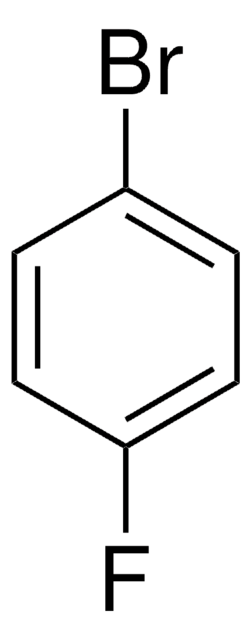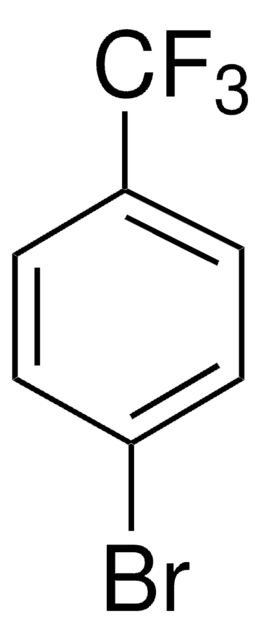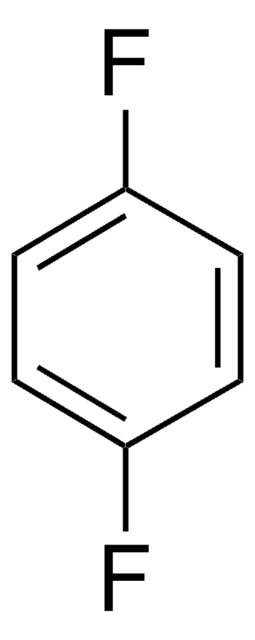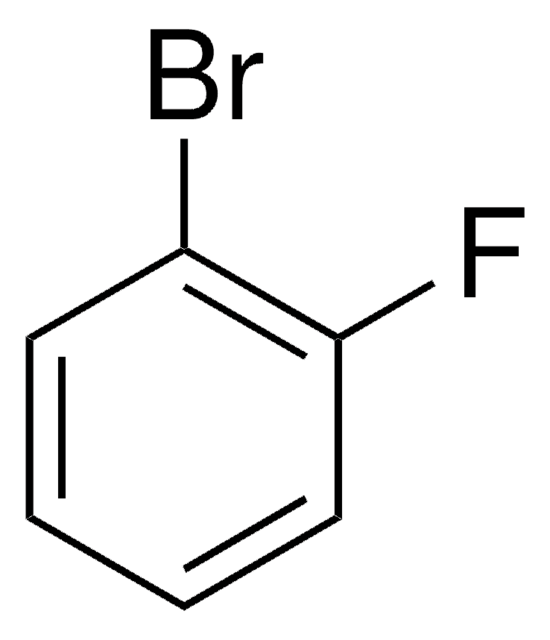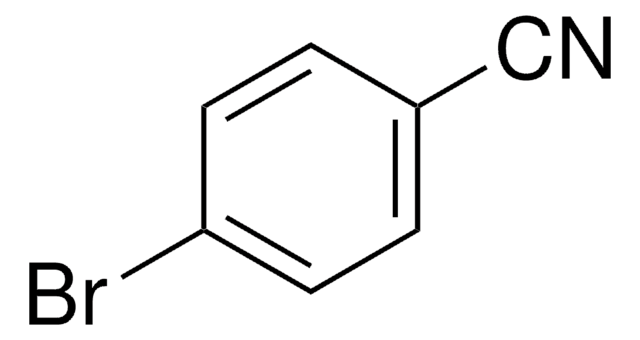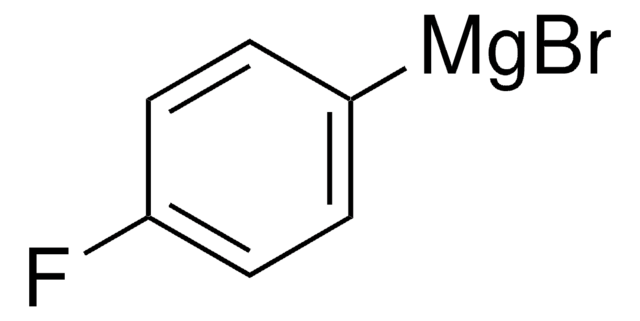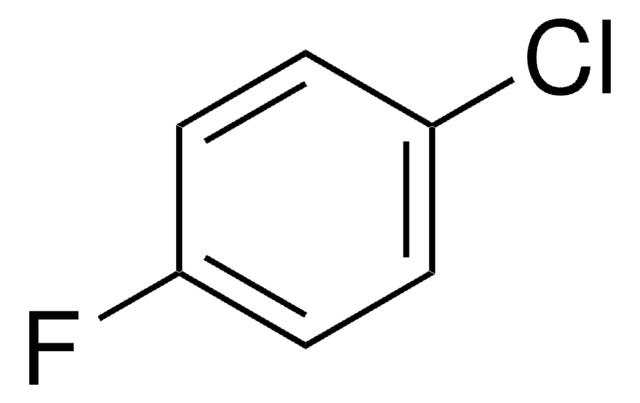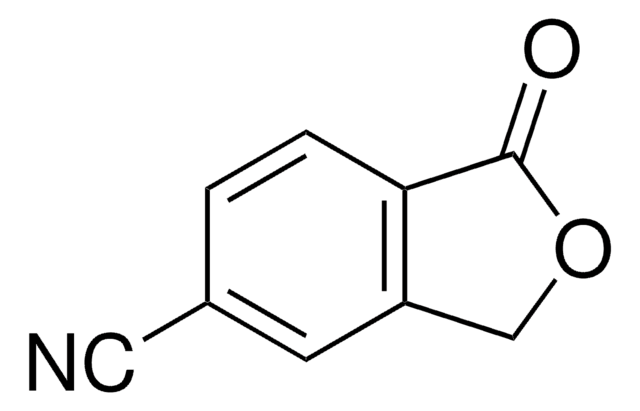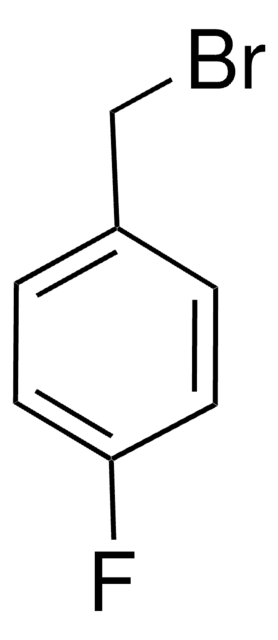B67201
1-Bromo-4-fluorobenzene
99%
Synonym(s):
1-Fluoro-4-bromobenzene, 4-Bromo-1-fluorobenzene, 4-Fluoro-1-bromobenzene, p-Fluorophenyl bromide
Sign Into View Organizational & Contract Pricing
All Photos(3)
About This Item
Linear Formula:
BrC6H4F
CAS Number:
Molecular Weight:
175.00
Beilstein:
774102
EC Number:
MDL number:
UNSPSC Code:
12352100
PubChem Substance ID:
NACRES:
NA.22
Recommended Products
Quality Level
Assay
99%
refractive index
n20/D 1.527 (lit.)
bp
150 °C (lit.)
mp
−16 °C (lit.)
density
1.593 g/mL at 25 °C (lit.)
SMILES string
Fc1ccc(Br)cc1
InChI
1S/C6H4BrF/c7-5-1-3-6(8)4-2-5/h1-4H
InChI key
AITNMTXHTIIIBB-UHFFFAOYSA-N
Looking for similar products? Visit Product Comparison Guide
General description
1-Bromo-4-fluorobenzene is commonly used in the Suzuki-Miyaura coupling reaction to form carbon-carbon bonds.
Signal Word
Warning
Hazard Statements
Precautionary Statements
Hazard Classifications
Eye Irrit. 2 - Flam. Liq. 3 - Skin Irrit. 2
Storage Class Code
3 - Flammable liquids
WGK
WGK 1
Flash Point(F)
127.4 °F - closed cup
Flash Point(C)
53 °C - closed cup
Personal Protective Equipment
dust mask type N95 (US), Eyeshields, Gloves
Choose from one of the most recent versions:
Already Own This Product?
Find documentation for the products that you have recently purchased in the Document Library.
Customers Also Viewed
Qian Luo et al.
Journal of chromatography. A, 1365, 45-53 (2014-09-27)
When iodide and natural organic matter are present in raw water, the formation of iodo-trihalomethanes (Iodo-THMs), haloacetonitriles (HANs), and halonitromethanes (HNMs) pose a potential health risk because they have been reported to be more toxic than their brominated or chlorinated
Michael Phillips et al.
Health physics, 108(5), 538-546 (2015-03-27)
There is widespread interest in the development of tools to estimate radiation exposures. Exhaled breath provides a novel matrix for assessing biomarkers that could be correlated with exposures. The use of exhaled breath for estimating radiation exposure is warranted, as
Jae Kwak et al.
Journal of separation science, 38(14), 2463-2469 (2015-05-07)
Volatile organic compounds were collected and analyzed from a variety of indoor and outdoor air samples to test whether human-derived compounds can be readily detected in the air and if they can be associated with human occupancy or presence. Compounds
Christoph Hutzler et al.
Archives of toxicology, 88(7), 1295-1308 (2014-06-25)
Electronic (e-)cigarettes have emerged in recent years as putative alternative to conventional tobacco cigarettes. These products do not contain typical carcinogens that are present in tobacco smoke, due to the lack of combustion. However, besides nicotine, hazards can also arise
Our team of scientists has experience in all areas of research including Life Science, Material Science, Chemical Synthesis, Chromatography, Analytical and many others.
Contact Technical Service